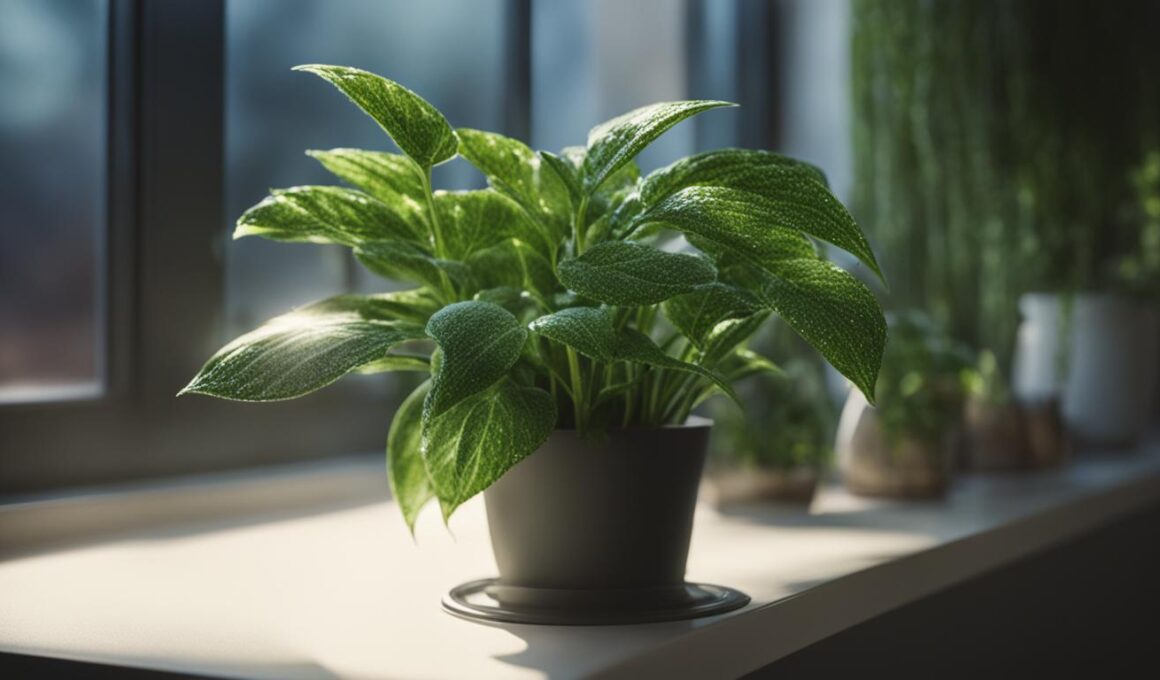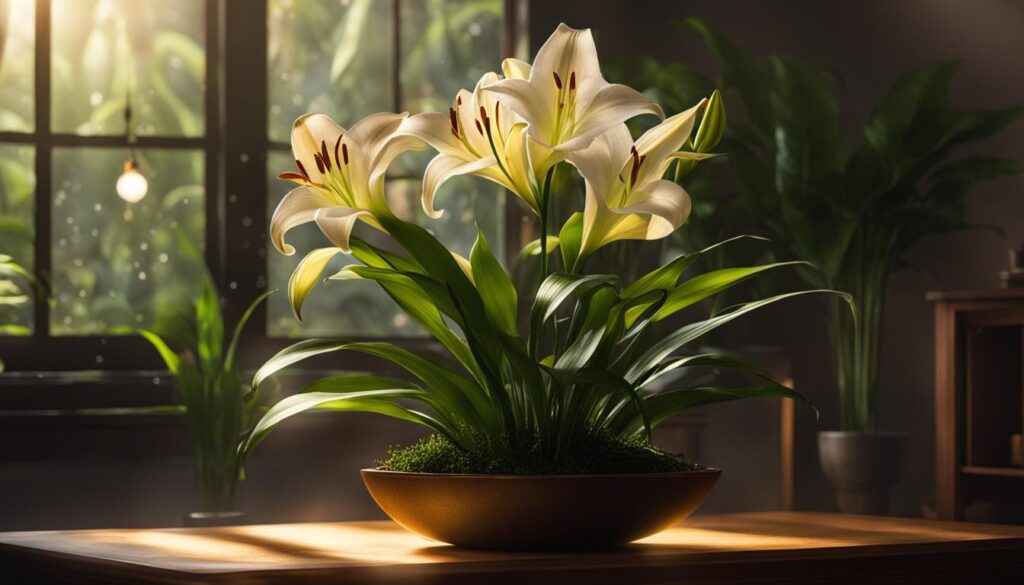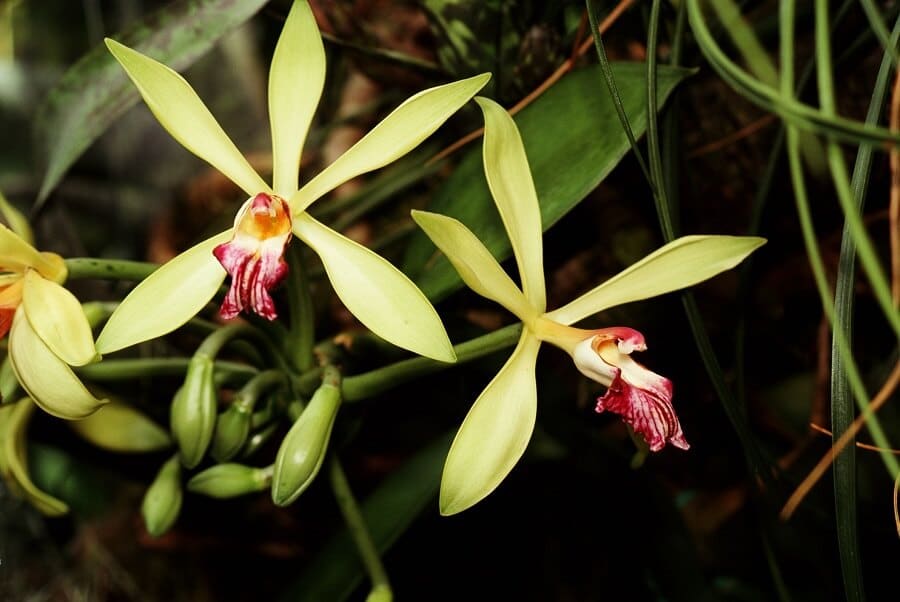Many people enjoy having houseplants to add beauty and greenery to their indoor environment. However, if you suffer from allergies, you may wonder if houseplants can trigger allergic reactions. In this article, we will explore the potential allergens in houseplants, the symptoms of plant allergies, and provide tips on preventing and managing allergies while still enjoying the benefits of indoor gardening.
Post Summary:- Houseplants can contain allergens such as pollen and mold, which can trigger allergic reactions in sensitive individuals.
- Symptoms of plant allergies may include a runny nose, sneezing, red and itchy eyes, and skin allergies.
- Preventing allergic reactions to plants can be achieved by choosing non-flowering plants, proper watering, ensuring sufficient sunlight, and using a dehumidifier and air purifier.
- There are allergy-safe plants that can purify indoor air while minimizing allergen exposure, such as peace lilies, marginata, golden pothos, philodendron, palms, and dracaena.
- Allergy medications like Clarityn® can provide relief from plant allergy symptoms, offering fast-acting and long-lasting relief without drowsiness.
Allergens in House Plants
Houseplants can contain allergens such as pollen and mold. Pollen, which is tiny and can float in the air, can lead to allergic reactions including sneezing and itchy eyes. Mold, a type of fungi, can thrive in the damp environments of indoor gardens and release spores that cause respiratory symptoms. It is important to be aware of these allergens when selecting houseplants.
Allergens in House Plants
Houseplants can contain allergens such as pollen and mold. Pollen, which is tiny and can float in the air, can lead to allergic reactions including sneezing and itchy eyes. Mold, a type of fungi, can thrive in the damp environments of indoor gardens and release spores that cause respiratory symptoms. It is important to be aware of these allergens when selecting houseplants.
| Pollen Allergens | Mold Allergens |
|---|---|
| Pollen from flowering plants | Indoor mold spores |
| Pollen from grasses and trees | Moist soil |
| Pollen from weeds | Damp organic matter |
| Poor ventilation |
Some common houseplants that may release allergenic pollen include certain species of ferns, palms, and flowering plants like jasmine and lilies.
It’s important to note that not all houseplants contain high levels of allergens. Some non-flowering plants, such as snake plants and spider plants, have low pollen production and are less likely to trigger allergies in sensitive individuals. When choosing houseplants, consider those that have been identified as allergy-friendly to minimize your risk of allergic reactions.
When it comes to mold allergens, proper care and maintenance of houseplants can help prevent mold growth. Avoid overwatering and ensure proper drainage to prevent excess moisture that promotes mold. Good ventilation and airflow can also help reduce the risk of mold development. Regularly inspecting plants for signs of mold and promptly addressing any issues can help create a healthier indoor environment.
Symptoms of Plant Allergy
Allergies to houseplants can manifest in a variety of symptoms. If you are allergic to plants, you may experience a runny or congested nose, sneezing, red and itchy eyes, itching in the mouth and ears, loss of smell, and headaches. These symptoms can be bothersome and affect your daily life. In some cases, direct contact with certain plant secretions or sap can also cause skin allergies, resulting in itchy rashes or bumps.
It is important to be aware of these symptoms and seek proper care if you suspect you have a plant allergy. While the symptoms may resemble those of other allergies or respiratory conditions, understanding the triggers and seeking appropriate treatment can greatly improve your quality of life.
Common Symptoms of Plant Allergy:
- Runny or congested nose
- Sneezing
- Red and itchy eyes
- Itching in the mouth and ears
- Loss of smell
- Headaches
- Itchy rashes or bumps from direct contact with plant secretions or sap
If you experience any of these symptoms when around houseplants, it is advisable to consult with a healthcare professional for an accurate diagnosis and appropriate treatment options. They can help determine if your symptoms are indeed caused by plant allergies or if there may be other underlying factors contributing to your discomfort.

Quote:
“Understanding the symptoms of plant allergy is crucial in identifying and managing the condition. By recognizing the signs early on, individuals can take necessary steps to minimize exposure and seek appropriate treatment, allowing them to enjoy indoor gardening without compromising their health.” – Dr. Jennifer Miller, Allergist
Preventing Allergic Reactions to Plants
Allergies to houseplants can be a hassle, but there are measures you can take to prevent allergic reactions and still enjoy the beauty of indoor gardening. Here are some tips to create an allergy-friendly environment:
Select Non-Flowering Plants
Choose non-flowering plants or ones that produce minimal pollen to reduce allergen exposure. Flowering plants, especially those with vibrant blooms, tend to release more pollen into the air, which can trigger allergies in sensitive individuals. Opting for non-flowering plants will help minimize the amount of pollen circulating in your indoor space.
Proper Watering and Sunlight
Proper watering is essential to prevent mold growth, another common allergen associated with houseplants. Overwatering can create a damp environment that encourages mold to thrive. Be sure to water your plants only when necessary and allow the soil to dry out between waterings. Additionally, providing sufficient sunlight can also help minimize mold growth and create a healthier environment for both you and your plants.
Use a Dehumidifier and Air Purifier
To further reduce allergens in the air, consider using a dehumidifier to maintain humidity levels below 50%. Excessive humidity can promote mold growth, so keeping moisture in check is crucial. Additionally, using an air purifier equipped with a high-efficiency particulate air (HEPA) filter can help capture and remove airborne allergens, such as pollen and mold spores, providing cleaner air for allergy-prone individuals.
| Tip | Description |
|---|---|
| Select Non-Flowering Plants | Choose houseplants that do not produce pollen to minimize allergen exposure. |
| Proper Watering | Avoid overwatering to prevent mold growth, a common allergen associated with houseplants. |
| Sufficient Sunlight | Provide adequate sunlight to reduce mold growth and create a healthier environment. |
| Use a Dehumidifier | Maintain humidity levels below 50% to prevent the growth of mold and mildew. |
| Use an Air Purifier | Install an air purifier with a HEPA filter to capture and remove airborne allergens. |
By implementing these preventive measures, you can enjoy the benefits of indoor gardening while minimizing the risk of allergic reactions. Creating an allergy-friendly indoor environment will allow you to surround yourself with beautiful plants without compromising your health.
Choosing the Right Plants for Your Home
When it comes to selecting houseplants for your home, it is important to choose ones that are not only aesthetically pleasing but also safe for individuals with allergies. Fortunately, there are several allergy-safe plants that can thrive indoors while minimizing the risk of triggering allergic reactions. These plants have a lower pollen production and are less likely to cause irritation in sensitive individuals.
Peace Lilies
Peace lilies, with their attractive dark green leaves and elegant white flowers, are not only beautiful but also known for their air-purifying properties. They are suitable for those with allergies as they produce little to no pollen, making them a great choice for allergy sufferers.
Marginata
Marginata, also known as the dragon tree, is a popular houseplant with long, slender leaves that have vibrant red or green edges. This plant is low-maintenance and does not produce significant amounts of pollen, making it an excellent choice for those seeking an allergy-friendly plant.
Golden Pothos
The golden pothos, with its heart-shaped leaves and trailing vines, is a versatile and easy-to-grow plant that can thrive in a variety of indoor conditions. It is an ideal choice for individuals with allergies as it has minimal pollen production and can help remove toxins from the air.
Philodendron
Philodendrons are popular houseplants known for their large, glossy leaves. There are different varieties available, including the heartleaf philodendron and the elephant ear philodendron, both of which are considered allergy-safe plants. These plants have minimal pollen production and can add a touch of tropical elegance to any indoor space.
Palms
Various types of palms, such as the areca palm, kentia palm, lady palm, and bamboo palm, are not only visually appealing but also safe for individuals with allergies. These plants are known for their low allergenicity, as they have minimal pollen production and can thrive in indoor environments with ease.
Dracaena
Dracaena plants come in a variety of shapes and sizes, making them a popular choice for indoor gardening. These plants are considered allergy-safe as they have minimal pollen production. With their vibrant foliage, dracaenas can add a splash of color to any room while keeping allergy symptoms at bay.
By selecting allergy-safe plants such as peace lilies, marginata, golden pothos, philodendron, palms, and dracaena, you can enjoy the beauty and benefits of indoor gardening without worrying about triggering allergic reactions. These plants not only add greenery to your home but also contribute to cleaner indoor air quality, making them a great choice for both allergy sufferers and plant enthusiasts.
Allergy Relief with Clarityn®: Fast-Acting and Long-Lasting
If you experience allergies triggered by houseplants, finding effective relief is crucial. Clarityn® is a trusted allergy medication that can help alleviate your symptoms, allowing you to enjoy your indoor garden without discomfort. Clarityn® offers a non-drowsy formula, ensuring that you can go about your day without feeling sluggish. With its long-lasting effects, you can experience relief from your plant allergies for up to 24 hours with just one dose.
Clarityn® contains the active ingredient loratadine, which works to block the action of histamines in your body. Histamines are chemicals released by your immune system in response to allergens, and they are responsible for causing allergy symptoms such as sneezing, itching, and a runny nose. By blocking the histamines, Clarityn® helps to relieve these symptoms, allowing you to breathe easier and enjoy your indoor plants without discomfort.
Whether you suffer from seasonal allergies or year-round plant sensitivities, Clarityn® can provide the relief you need. With its fast-acting formula, you can start experiencing relief within an hour of taking the medication. Clarityn® is suitable for both adults and children over the age of 2, making it a convenient solution for the whole family. Always read the packaging and follow the instructions for proper dosage and usage.
| Benefits of Clarityn® for Allergy Relief |
|---|
| Fast-acting formula provides relief within an hour |
| Non-drowsy, allowing you to go about your day |
| Long-lasting effects for up to 24 hours per dose |
| Suitable for adults and children over 2 years old |
With Clarityn® as part of your allergy management plan, you can enjoy the beauty and benefits of your indoor plants without the worry of uncomfortable symptoms. Remember to consult with a healthcare professional if you have any concerns or questions about using Clarityn® for your allergies. Take control of your plant allergies with Clarityn® and reclaim your enjoyment of indoor gardening.
Disclaimer:
This information is provided for informational purposes only and should not be considered as medical advice. Always consult with a healthcare professional before starting any medication or treatment for allergies. This product may not be suitable for everyone, and individual results may vary. Please read the packaging and instructions carefully.
Tips for Allergy-Free Indoor Gardening
Indoor gardening is a wonderful way to bring nature into your home and create a peaceful and relaxing environment. However, if you suffer from allergies, it’s important to take a few extra precautions to minimize allergic reactions. Here are some tips to help you enjoy gardening indoors without triggering allergies:
1. Choose Allergy-Friendly Plants
When selecting plants for your indoor garden, opt for allergy-friendly varieties that have low pollen production. Some plants that are known to be less allergenic include peace lilies, marginata, golden pothos, philodendron, various types of palms (areca palm, kentia palm, lady palm, bamboo palm), and dracaena. These plants not only add beauty to your space but also help purify indoor air.
2. Prevent Flowering
Flowering plants tend to produce more pollen, which can trigger allergies. To minimize allergen exposure, pinch off the buds of flowering plants before they bloom. This will prevent the release of pollen and keep your indoor environment free from potential allergens.
3. Maintain Proper Care and Hygiene
Proper care and hygiene can go a long way in reducing allergens in your indoor garden. Avoid overwatering your plants to prevent the growth of mold, as mold spores can cause respiratory symptoms. Regularly dust the foliage of your plants with a damp cloth to remove dust and pollen. Additionally, ensure good ventilation in your indoor space to prevent the buildup of allergens.
| Plant | Pollen Production | Level of Allergenicity |
|---|---|---|
| Peace Lily | Low | Low |
| Marginata | Low | Low |
| Golden Pothos | Low | Low |
| Philodendron | Low | Low |
| Areca Palm | Low | Low |
| Kentia Palm | Low | Low |
| Lady Palm | Low | Low |
| Bamboo Palm | Low | Low |
| Dracaena | Low | Low |
By following these tips, you can create an allergy-friendly indoor garden that brings you joy and tranquility without the discomfort of allergic reactions. Remember, a little extra care and attention can go a long way in ensuring a pleasant gardening experience.
Can Indoor Mold From Plants Cause Allergies?
Indoor plants can create a cozy atmosphere, but can indoor plants cause mold? Yes, they can. Moisture-loving molds can grow on the soil and other plant parts, releasing spores that can trigger allergies. To prevent this, ensure proper ventilation, avoid overwatering, and clean plant containers regularly.
Conclusion
Houseplants can potentially cause allergies due to the presence of allergens like pollen and mold. However, it is important to note that not all plants are allergenic. By selecting allergy-friendly plants and practicing proper care and maintenance, you can still enjoy the beauty and benefits of indoor gardening without compromising your health.
Creating an allergy-friendly indoor environment is key. Choose plants that produce minimal pollen or opt for non-flowering varieties. Proper watering and ventilation can prevent excess moisture and mold growth, while regularly dusting plant foliage helps reduce allergens. These measures contribute to a healthier indoor environment.
If you experience allergic reactions to houseplants, there are options for relieving your symptoms. Allergy medications like Clarityn®, which is fast-acting, long-lasting, and non-drowsy, can effectively alleviate symptoms triggered by airborne allergens. This provides a convenient solution for managing plant allergies, allowing you to continue enjoying your indoor garden.
With the right plant choices, care, and, if necessary, medication, you can create an allergy-friendly indoor environment that allows you to fully enjoy the benefits of houseplants. Take the necessary steps to minimize allergens and create a space where you can cultivate a beautiful and allergy-free indoor garden.
Could Growing Spices Indoors Aggravate Allergies from Houseplants?
Growing spices indoors can enhance your cooking, but it’s essential to consider how to grow spices indoors without aggravating allergies from houseplants. Ensure proper ventilation, clean regularly, and choose low-allergen plants. Seek advice on how to grow spices indoors without exacerbating allergies to enjoy your indoor garden without discomfort.
FAQ
Do all houseplants cause allergies?
No, not all houseplants cause allergies. There are many houseplants that are safe and do not cause allergic reactions. It is important to choose allergy-friendly plants if you are sensitive to allergens.
What allergens can be found in houseplants?
Houseplants can contain allergens such as pollen and mold. Pollen can lead to sneezing and itchy eyes, while mold spores can cause respiratory symptoms.
What are the symptoms of a plant allergy?
Symptoms of a plant allergy can include a runny or congested nose, sneezing, red and itchy eyes, itching in the mouth and ears, loss of smell, and headaches. Direct contact with plant secretions or sap can also cause skin allergies.
How can I prevent allergic reactions to houseplants?
To prevent allergic reactions to houseplants, you can choose non-flowering plants or ones that produce minimal pollen. Proper watering, ensuring sufficient sunlight, using a dehumidifier, and using an air purifier can also help minimize allergens in the air.
What are some allergy-safe plants that I can choose for my home?
Some allergy-safe plants include peace lilies, marginata, golden pothos, philodendron, various types of palms (areca palm, kentia palm, lady palm, bamboo palm), and dracaena. These plants have less pollen production and are less likely to trigger allergies in sensitive individuals.
How can I treat my allergies to plants?
If you experience allergic reactions to houseplants, there are medications available to provide relief. Clarityn®, a fast-acting and long-lasting allergy medication, can effectively alleviate symptoms triggered by airborne allergens. It is non-drowsy and suitable for both adults and children.
What are some tips for allergy-free indoor gardening?
To minimize allergic reactions while enjoying indoor gardening, you can be selective in plant choices, prevent flowering by pinching off buds, ensure proper watering and ventilation to prevent mold growth, and regularly dust plant foliage to reduce allergens in the environment.
How can I create an allergy-friendly indoor environment?
To create an allergy-friendly indoor environment, it’s important to choose allergy-safe plants, take measures to minimize allergens, and use allergy medication if needed. This allows you to enjoy the beauty and benefits of houseplants while minimizing allergy symptoms.








